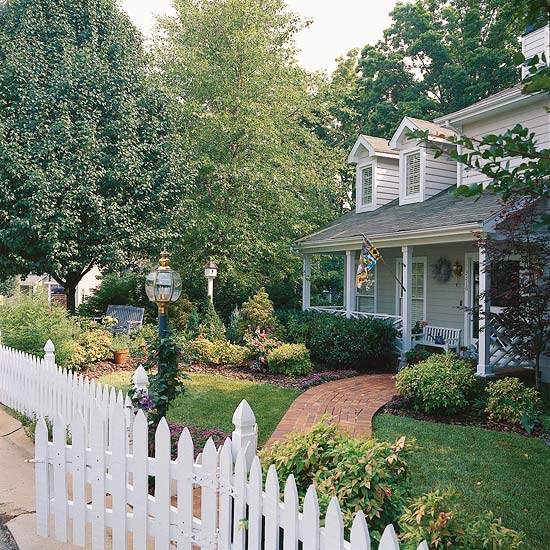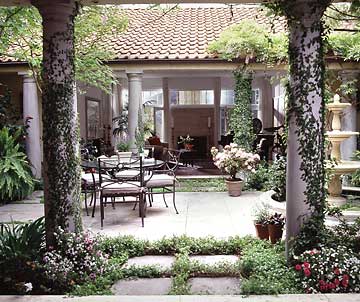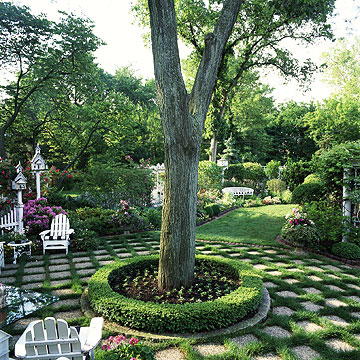





 A good home landscape is both beautiful and functional, with plants and features working together in harmony.
A good home landscape is both beautiful and functional, with plants and features working together in harmony.
The ideal landscape provides your family with recreation, privacy, and pleasure -- even as those needs change over time. What's more, the landscape should -- and will -- add to your home's value and its curb appeal in all seasons, especially fortunate at selling time. Here's how to get started with your plans.
Think of designing a landscape for the bare lot surrounding your new home as an adventure in creativity. Perhaps your property needs only a few small, easily doable projects to make it more attractive. Either way, it's important to consider how each change will relate to the big picture. Stand back from time to time to see the entire landscape and how each part fits into it.
You can build your own landscaping structures, including a timber bed. Find out how.
Begin at square one, whether you seek to perform landscaping magic by transforming a new site or you are refreshing an established one. Starting at square one means that you first see what you have to work with. Look at your landscape as if through a giant magnifying glass -- scrutinizing every detail. Then allow yourself to dream. Soon you'll be conjuring up all sorts of ideas and sketching out some rough plans. By gradually working through the initial stages, you'll move on to planning and eventually have a finished design.
 A pleasing mix of trees, shrubs, flowers, paving, and outdoor furniture creates an intimate landscape that invites relaxation.
A pleasing mix of trees, shrubs, flowers, paving, and outdoor furniture creates an intimate landscape that invites relaxation.
Landscape professionals will tell you that a master plan is the key to any landscape project or solution. A master plan is more than a drawing or a design -- it's a well-thought-out plan of action that includes a design. It enables you to feel confident that you're on the correct path toward building the landscape that's right for you and your property.
Any project becomes more attainable when you're willing to accomplish the plan in stages. Be realistic about how much you can accomplish each year. Many people like to work -- and budget -- on the basis of a five-year plan.
Although detailed and complex, the process can be enjoyable if taken a little at a time. You won't regret spending the time to do it right. When you've finished, you'll have a master plan -- or a masterful design -- to show for your efforts. In the event the words "master plan" seem set in concrete, you may find the idea of "long-range plan" less fixed though no less useful in accomplishing the small and large goals that add up to a satisfying landscape.

Before putting pencil to paper or planting flowers, spend some time figuring out what you want to accomplish in your landscape. Much of the planning and designing will occur in your head as you consider ideas and think about what appeals to you most. Brainstorm and take notes on paper. As you proceed with each step in planning and design, be sure to adapt the plan to your particular conditions and desires instead of trying to follow lots of rigid rules.
Before you spend money on materials or contractors, explore different ways to reach your goals. Learn new skills by volunteering to help a friend build a deck. Watch a professional pour concrete or build a retaining wall at a new homesite. Be inspired rather than intimidated by opportunities to learn.
At any step in your decision-making, don't hesitate to ask for expert advice from landscaping professionals. When you reach the final design and are ready to begin the actual work, continue to ask for help when you need it.
After all, landscaping is a practical yet personal process, and you want the outcome to be wonderful. What could be more rewarding than designing your home's landscape, transforming your plans into reality, and enjoying the results for years to come? Trends such as butterfly gardening, heirloom vegetables, old roses, and ornamental grasses can be the icing on the cake in keeping the whole process fresh, appealing, and exciting.
Copyright © www.100flowers.win Botanic Garden All Rights Reserved